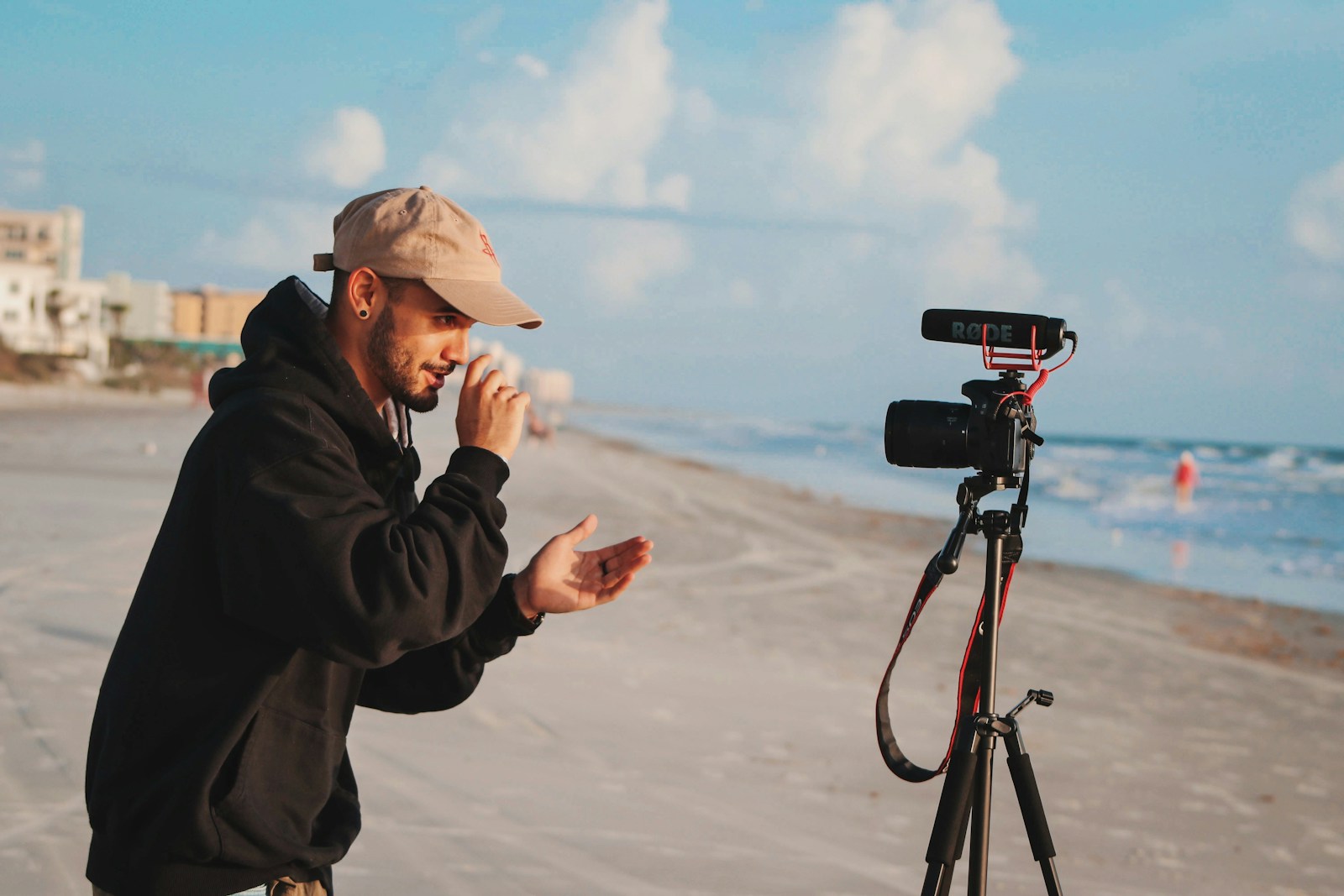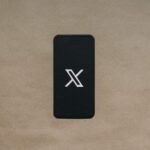Looking for the perfect vlogging camera in 2025? The market has evolved significantly with several impressive options now available for content creators at every level. Whether you’re just starting your YouTube journey or looking to upgrade your setup, today’s vlogging cameras offer incredible features designed specifically for video content creation.
The Sony ZV-E10 II currently stands as the top choice for vloggers in 2025, offering the perfect balance of quality, features, and price. Other strong contenders include the DJI Osmo Pocket 3, which has made significant improvements over its predecessor, becoming an excellent compact option for on-the-go content creators. For advanced video work, the Panasonic LUMIX GH7 continues to impress professional vloggers with its comprehensive feature set.

Camera technology for vlogging has focused on addressing the specific needs of content creators, with improvements in autofocus systems, built-in stabilization, and audio quality. Many new models now come with dedicated vlogging modes, flip screens for self-recording, and enhanced 4K video capabilities that help creators produce professional-looking content without needing extensive technical knowledge.
The Best Cameras for Vlogging (2025)
Whether you’re a travel vlogger, a tech reviewer, or a daily lifestyle creator, the right camera can make your content look professional and engaging. In 2025, vloggers have access to AI‑powered autofocus, 4K/8K video, and lightweight designs that make filming easier than ever.
1. 2025 Vlogging Camera Rankings
1. Sony ZV‑E10 II – Best Overall for Most Creators
- Why it’s #1: Compact, interchangeable lenses, excellent autofocus, and great price-to-performance ratio.
- Pros: 4K 60 FPS, AI subject tracking, flip‑out screen.
- Cons: No in‑body stabilization (lens IS needed).
2. DJI Osmo Pocket 3 – Best Pocket Vlogging Camera
- Why it’s great: Ultra‑portable with a built‑in gimbal for smooth footage.
- Pros: 4K 120 FPS, mechanical stabilization, great for travel.
- Cons: Smaller sensor than mirrorless rivals.

3. Canon PowerShot V10 – Best for Beginners
- Why it’s great: Simple, affordable, and designed specifically for vlogging.
- Pros: Built‑in stand, vertical shooting, easy controls.
- Cons: Limited low‑light performance.
4. Sony ZV‑1 II – Best Compact Camera for Pro Quality

- Why it’s great: Large 1‑inch sensor in a pocketable body.
- Pros: Excellent color science, fast autofocus, ND filter.
- Cons: Fixed lens.
5. Insta360 Ace Pro – Best Action/Adventure Vlogging Camera

- Why it’s great: Waterproof, AI editing, and 8K video.
- Pros: Versatile mounting, great for sports/travel.
- Cons: Not ideal for talking‑head indoor videos.
2. 2025 Vlogging Camera Comparison Table
| Rank | Camera Model | Video Resolution | Weight | Stabilization | Price (USD) | Best For |
|---|---|---|---|---|---|---|
| 1 | Sony ZV‑E10 II | 4K 60 FPS | 343 g | Lens‑based | ~$900 (body) | All‑round vlogging |
| 2 | DJI Osmo Pocket 3 | 4K 120 FPS | 179 g | 3‑axis gimbal | ~$520 | Travel vlogging |
| 3 | Canon PowerShot V10 | 4K 30 FPS | 211 g | Digital | ~$400 | Beginners |
| 4 | Sony ZV‑1 II | 4K 30 FPS | 292 g | Optical + digital | ~$750 | Compact pro quality |
| 5 | Insta360 Ace Pro | 8K 24 FPS | 179 g | Electronic | ~$450 | Action/adventure |
3. How to Choose the Right Vlogging Camera
When picking a vlogging camera in 2025, consider:
- Portability – Will you be traveling or filming at home?
- Video Quality – 4K is standard; 8K is nice but not essential.
- Stabilization – Critical for handheld shooting.
- Audio – Look for a mic input or strong built‑in mics.
- Battery Life – Longer filming sessions need bigger batteries or USB‑C charging.
💡 Pro Tip: If you’re just starting out, don’t overspend — a $400–$600 camera with good stabilization and audio will serve you well until you grow your channel.
Key Takeaways
- The Sony ZV-E10 II leads the vlogging camera market in 2025, with the DJI Osmo Pocket 3 excelling as a compact alternative.
- Modern vlogging cameras prioritize creator-friendly features like flip screens, improved autofocus, and dedicated vlogging modes.
- 4K video capability has become standard for quality vlogging content, with manufacturers focusing on making professional features more accessible.
Optimizing Image and Video Quality for Vlogging
Creating high-quality vlogs requires understanding camera technology and how to get the best possible image. Today’s vlogging cameras offer advanced features that can significantly improve video quality when used correctly.
The Importance of 4K Video and High Dynamic Range
4K video recording has become standard for serious vloggers. The higher resolution (3840 x 2160 pixels) offers much clearer footage than 1080p, giving creators more flexibility during editing. This extra detail allows for cropping and reframing without losing quality.
Dynamic range is equally important for vlogging. Cameras with high dynamic range capture more details in both shadows and highlights. This is crucial when filming in challenging lighting conditions, like bright sunlight with dark shadows.
Many newer vlogging cameras, including the Sony ZV-1 II, offer both 4K capability and enhanced dynamic range settings. These features help create more professional-looking content that stands out on platforms like YouTube.
Vloggers should also look for cameras with HDR recording options, which can make colors appear more vivid and true-to-life.
Choosing Cameras with Superior Low-Light Performance
Low-light performance can make or break vlogging footage. Good low-light capability means cleaner videos with less noise when filming indoors, at night, or in dimly lit settings.
Key factors affecting low-light performance include:
- Sensor size: Larger sensors capture more light
- Maximum aperture: Lower f-numbers (like f/1.8) let in more light
- ISO performance: Better cameras maintain quality at higher ISO settings
Cameras like the Fujifilm X-S20 excel in low-light situations thanks to larger sensors and advanced processing. Even compact options like the Canon PowerShot V10 include features to improve low-light recording.
When comparing cameras, look at sample footage recorded in dim conditions. Pay attention to noise levels and how well details are preserved when light is limited.
Comparing Sensor Types: From Full-Frame to Compact Options
Camera sensors come in different sizes, each with advantages for vlogging:
| Sensor Type | Advantages | Example Cameras |
|---|---|---|
| Full-frame | Best low-light, shallow depth of field | Sony A7 series |
| APS-C | Good balance of quality and portability | Fujifilm X-S20 |
| Micro Four Thirds | Compact, good for travel vlogging | Panasonic GH series |
| 1-inch | Very portable, still decent quality | Sony ZV-1 II |
Full-frame sensors offer the best image quality but come with larger, heavier cameras. For many vloggers, APS-C or 1-inch sensors provide the best balance between quality and portability.
Sensor size affects more than just image quality. Larger sensors create a more pleasing background blur (bokeh) that can make talking-head videos look more professional.
Advanced Features for Image Quality: Log Profile and Color Science
Professional vloggers often use advanced color features to achieve a distinctive look. Log profiles (like S-Log for Sony or F-Log for Fujifilm) capture more dynamic range by recording a flat image that can be color graded later.
Color science—how each camera brand processes colors—creates different looks. Canon cameras tend to produce warmer skin tones, while Sony offers more neutral colors. Fujifilm is known for film simulation modes that mimic classic film stocks.
Other advanced features to consider include:
- Bit depth: Higher bit depth (10-bit vs 8-bit) allows for more color information
- Color sampling: Better sampling (4:2:2 vs 4:2:0) improves color accuracy
- Picture profiles: Custom settings that optimize color and contrast
The Insta360 X3 offers unique color options specifically designed for action vlogging with vibrant, social media-ready looks straight from the camera.
Essential Camera Features for Professional Vloggers
Professional vloggers require specific camera features to create high-quality content that stands out in today’s competitive landscape. The right combination of video capability, audio quality, stabilization, and usability can dramatically improve production value.
Autofocus Capabilities and Tracking Systems
The autofocus system is perhaps the most crucial feature for vloggers who need to stay in focus while moving. Modern vlogging cameras like the Sony ZV-1 II offer real-time eye AF that keeps subjects sharp even during dynamic shooting. This technology can track faces and eyes with remarkable precision, allowing vloggers to concentrate on content rather than technical settings.
Look for cameras with:
- Fast and reliable focus acquisition
- Face/eye detection and tracking
- Focus transition controls for smooth subject changes
- Low-light focusing capability
The Panasonic LUMIX GH7, noted in recent 2025 reviews, provides advanced autofocus performance that excels in challenging lighting conditions – essential for vloggers who shoot in varied environments.
Built-In vs. External Audio Solutions for Clear Audio Quality
Poor audio can ruin otherwise excellent video content. Most professional vloggers prioritize high-quality microphone options for their setups.
Built-in microphones have improved significantly, with directional mics and wind screens becoming standard on vlogging-focused cameras. The Sony ZV-1 II includes a directional three-capsule mic that captures clearer voice recording than typical camera microphones.
For professional results, consider:
- Cameras with headphone ports for audio monitoring
- External microphone inputs (3.5mm or XLR)
- Wind reduction settings
- Manual audio level controls
External microphones typically deliver superior results, but they add bulk to mobile setups. The best choice depends on your mobility needs versus audio quality requirements.
Evaluating Stabilization: In-Body vs. Digital Solutions
Stabilization is essential for smooth, professional-looking footage, especially when filming while walking or moving.
In-body image stabilization (IBIS) physically moves the sensor to counteract camera shake. This technology, available in cameras like the Panasonic LUMIX GH7, works with any lens and provides superior results in low light.
Electronic image stabilization (EIS) uses software to correct shake but may crop the frame and reduce quality slightly. Many vlogging cameras combine both technologies for optimal results.
For maximum stability, some vloggers use a gimbal, though this adds complexity to the setup. The best approach depends on your shooting style:
- Handheld vlogging: Prioritize IBIS
- Walking/action shots: Consider hybrid stabilization
- Studio work: Stabilization less critical
Match your stabilization needs to typical shooting scenarios for the best results.
Design Considerations: Usability and Camera Interface
A vlogging camera’s design can make or break the user experience. The ideal camera provides quick access to essential functions without menu diving.
The flip-out screen has become nearly mandatory for vloggers, allowing self-framing and monitoring. Touch interfaces enable quick focus point selection and settings adjustments while recording.
Key design features to evaluate:
- Compact design for portability
- Ergonomics and button placement
- Custom function buttons
- Smartphone connectivity for remote control
- Battery life and charging options
The 2025 vlogging camera lineup features more intuitive interfaces aimed specifically at content creators. Models with dedicated vlogging modes simplify setup and operation, letting creators focus on their message rather than technical settings.
Frequently Asked Questions
Many vloggers have common questions about camera selection. These questions cover various aspects from beginner options to professional gear choices and technical specifications that matter most for quality content creation.
What are the top cameras currently recommended for beginner vloggers?
For beginners entering the vlogging world, the Sony ZV-1 II stands out as a top recommendation. This compact camera is specifically designed with vloggers in mind and offers excellent video quality without overwhelming complexity.
Smartphones with good cameras also make great starting points. Many newer models have stabilization features and high-quality video capabilities that can produce professional-looking content while beginners learn the craft.
The GoPro 9 Black is another solid option, especially for action-oriented vlogging. Its durability and stabilization make it perfect for on-the-go content creation.
Which cameras offer the best value for both vlogging and photography?
Cameras that excel at both video and still photography provide the most value for content creators. Mirrorless cameras often hit this sweet spot, offering high-quality video features while maintaining excellent photo capabilities.
Some models like the Sony Alpha series balance both needs effectively. They provide 4K video recording alongside professional-grade photography features at various price points.
The Canon EOS M50 Mark II offers good value for those wanting dual functionality without breaking the bank. Its flip screen and autofocus system work well for both vlogging and photography.
How should one choose a camera that is well-suited for vlogging purposes?
When selecting a vlogging camera, several key features deserve attention. Reliable autofocus is essential for keeping subjects sharp, especially when filming oneself or moving subjects.
Size and weight should be considered for those who vlog on the go. A compact, lightweight camera prevents arm fatigue during extended shooting sessions and makes traveling with gear much easier.
Built-in stabilization significantly improves video quality by reducing shakiness. This feature becomes particularly important when filming while walking or in motion.
A flip screen or articulating display allows vloggers to see themselves while recording. This helps ensure proper framing and composition when filming solo.
What is the minimum video resolution one should consider when purchasing a vlogging camera?
In 2025, 4K resolution (3840 x 2160 pixels) should be considered the minimum standard for vlogging cameras. This resolution provides sharp, detailed footage that maintains quality even when edited or cropped.
While 1080p remains acceptable for certain platforms, higher resolutions future-proof content and allow for more flexibility in post-production. Many viewers now expect 4K quality, especially for travel, product reviews, and beauty content.
Frame rates of at least 30fps are recommended, with 60fps capabilities being ideal for smooth motion or slow-motion effects. Higher frame rates give vloggers more creative options in their content.
What are the latest advancements in camera technology for vlogging in 2025?
Advanced artificial intelligence features have become standard in newer vlogging cameras. These include improved subject tracking, intelligent exposure adjustments, and enhanced low-light performance.
Computational photography techniques now extend to video, allowing for better dynamic range and color science. These advancements help create more cinematic footage straight from the camera.
Improved battery technology has extended recording times significantly. Many new models can now record continuously for several hours without overheating, solving a common problem in previous generations.
Wireless connectivity features have also advanced, with seamless smartphone integration for remote control and instant sharing to social platforms becoming standard in most vlogging cameras.
Which vlogging cameras are favored by professional YouTubers?
Professional YouTubers often gravitate toward the Sony ZV line for its specialized vlogging features. The product-showcase mode and excellent autofocus make it popular among review channels and beauty vloggers.
The Canon EOS R series has gained favor with professional travel vloggers. Its weather sealing, excellent color science, and robust lens ecosystem make it suitable for challenging environments.
GoPro remains the preferred choice for action-oriented content creators. The latest models offer impressive stabilization and durability that other camera types cannot match in extreme conditions.
Some professionals use cinema cameras like the Blackmagic Pocket series for their superior dynamic range and color grading capabilities. While less portable, these offer unmatched image quality for studio-based vlogging.







